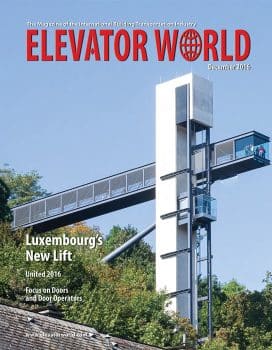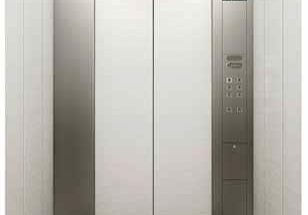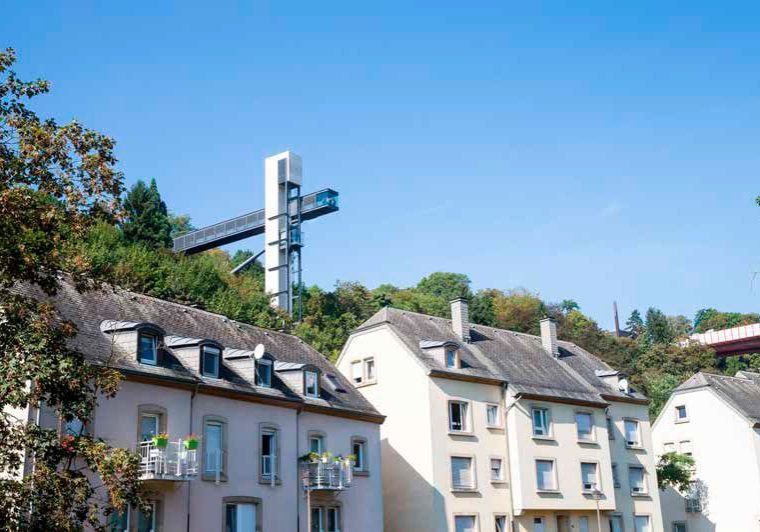Thoughts on Escalator and Moving Walk Maintenance
Dec 1, 2016

Procedures, frequency, training, responsibilities and more are covered in the examination of maintenance.
The Merriam-Webster dictionary defines maintenance as “the upkeep of property or equipment.” Escalators and moving walks, like all machines, require maintenance to maintain optimal performance throughout their lives. More importantly, they require routine maintenance visits by trained technicians to remain safe for use by the millions who ride them daily.
Learning Objectives
After reading this article, you should have learned:
♦ Maintenance requirements are specific for each type of unit.
♦ The ASME A17.1 code requires certain escalator maintenance items be performed.
♦ Escalator owners also have responsibilities related to maintenance.
♦ Technicians need specific training for different units.
♦ The maintenance section of A17.1 applies to all units, no matter their age.
Normal escalator maintenance consists primarily of:
- Cleaning the escalator and its components
- Adjusting items that wear, such as chains, belts, handrail drives, some types of guides and some brakes
- Replacing components as they wear or fail, such as electrical components, chains, belts, handrails, guides, rollers and brakes.
- Lubricating components such as chains, bearings, bushings, gearboxes and skirts as required to maintain the step/skirt performance index.
Maintenance requirements are specific for each type of unit. For example, for most units, the replacement of comb sections would be added to the list above. Maintenance frequency depends on several factors, including the environment. One-size-fits-all maintenance programs for escalators and moving walks just do not work due to the wide variation of equipment in the field and the conditions under which they operate.
Maintenance Procedures
The OEM develops maintenance specifications and procedures for each escalator or moving walk model before it enters production and, according to feedback from the field over time, modifies them if necessary. Maintenance procedures are specific to an individual model due to variation of such aspects as type of controls, driving machine, handrail drive, step guidance systems, safety devices and individual components. For example, although they are both escalators and can be the same width and rise, the maintenance requirements of a KONE ECO3000 differ quite a bit from those of a Westinghouse Modular escalator.
Maintenance Frequency
There are several things that affect the frequency of maintenance on an escalator: its model, the quality of its components, its daily hours of operation, its age and the environment in which it operates. The quality of components in an escalator have a bearing on maintenance frequency: lower-quality components may necessitate increased inspection, maintenance and replacement frequency. Also, it is reasonable to assume that the more hours per day that a unit runs, the higher its maintenance frequency should be. However, units operating at reduced speed when not in use may not require the same maintenance frequency as a unit that operates at a constant speed for the same duration.
Generally, as equipment ages, some of its components may need to be serviced more frequently. The step band is a good example. Over time, the step chain elongates, and rollers and step guidance systems wear. This can cause the need for more frequent inspection and adjustment of the “turn around,” tracking, clearances, step/skirt clearances, and roller inspection and replacement. The environment in which a unit operates has an effect on maintenance frequency. Generally, an outdoor unit requires a higher frequency of some maintenance tasks than an indoor unit. Units in public-transportation systems will generally require a higher maintenance frequency on some items than those in department stores, even though they may be heavy-duty designs. OEMs also have certain maintenance frequencies for their equipment. An example could be hours between gearbox oil changes.
Maintenance Training
The industry today is different from the one in which your author began his career more than 30 years ago. One difference is that maintenance companies work on a variety of units from different manufacturers (instead of, primarily, equipment it produces itself). This poses some training issues for mechanics working today. They need to be knowledgeable about performing maintenance on units manufactured by other companies. An appropriate analogy would be that a mechanic trained to work on Chevrolets may need some training to excel at working on Ferraris. In addition, older units were far simpler to work on than the microprocessor-controlled units with variable-voltage, variable-frequency drives we have today. Technicians today require special service tools and unit-specific training for the different units they must service. It is necessary for the maintenance companies to have specialized training for their mechanics to be able to knowledgeably repair the sophisticated units made by other companies.
A17 Code Requirements
Section 8.6 of ASME A17.1 Safety Code for Elevators and Escalators requires that various specified items be maintained. Unlike most sections of the code, the maintenance section is retroactive and applies to all units. The reader is encouraged to see the section for the actual language, but in brief, the code-required escalator maintenance items are:
- Handrails: operating at proper speed and in good condition
- Step/skirt clearance: complying with applicable code
- Step/skirt performance index: this is a test but requires proper maintenance to pass.
- Combs: broken teeth must be replaced, and they must mesh with steps.
- Skirt panels: damaged panels should be repaired.
- Steps: worn, damaged or broken steps should be repaired or replaced.
- Rollers, tracks and chains: examine and repair or replace as necessary
- Signs: “Caution” signs shall be provided and in good condition.
- Ceiling intersection guards (if required): repair or replace as necessary.
- Anti-slide devices (if required): repair or replace as necessary.
- Handrail guards: repair or replace as necessary.
- Brakes: torque per data plate.
- Cleaning: clean to prevent the accumulation of oil, grease and dirt.
- Entrance and egress ends: free of trip hazards and safety zones free of obstructions
The requirements for moving walks are virtually identical, with the addition of belt maintenance for the few moving walks that use belts instead of pallets. As can be seen, the code covers the key items for maintenance of escalators and moving walks. It does not specify the exact tasks required or their frequency. How to perform the specific tasks to comply with the code requirements depends on the type of unit. The frequency of these requirements are determined by a proper maintenance control program (MCP), required by the code.
Important Maintenance Items
Steps/Pallets
Steps and pallets need to be cleaned and inspected thoroughly during the clean down or when other circumstances like noise, tracking and level warrant. Steps are susceptible to fatigue cracking, and some manufacturers have protocols for crack inspection/remediation on steel-bodied steps. Cracking can be caused by inadequate adjustment of tracks and related components. Cast aluminum steps with cracks should be replaced. Broken welds and some cracks are reasons to replace steps, as are dented, chipped, broken or worn treads and risers. Chipped, broken or sharpened treads could increase the likelihood of entrapment.
Step Chain
Step chains are high-dollar items and need to be properly maintained. Fortunately, their maintenance is relatively simple — clean, inspect and oil them (if required). Chains last longer when free of dirt and contamination. Dirt is abrasive, and when it enters the clearance between the pin and bushing of the chain, it causes wear, and the chain gradually becomes longer. The chain is usually cleaned and inspected during the clean down. If cracked links are found, lock out the unit and contact the manufacturer for instructions. Look at the clearance between steps or pallets in the horizontal — if they don’t mesh, the chain needs to be replaced. Make sure to look at the clearance between all the steps and pallets in case some chain is worn more than the rest. Look for fretting (“red rust”), which indicates lack of lubricant. Once fretting appears, the chain has already started to wear at an accelerated rate.
Most lubrication-free escalator chains use a plastic bearing that, while not requiring lubricant, makes the chain larger and more expensive. All chain types except this one require regular oiling to achieve maximum life and smooth operation. Lubricant on the exterior surfaces of the chain protects it from corrosion but does not extend its life. Oil needs to penetrate into the pin/bushing bearing area of the chain (through the gap between link plates) to do any good. Use the lube recommended by the manufacturer. (Grease is too thick, and WD-40-type sprays are too low a viscosity to protect the wear surfaces.) Oil can be brushed on, sprayed with a handheld sprayer or applied with an automatic oiler, and each method has advantages and disadvantages. The important thing is to get the oil into the pin/bushing area. Excess oil is wasted, extends clean down time and poses environmental issues.
The sprockets are usually replaced at the same time the chain is replaced. This is especially true of the drive chain and handrail drive chains. If not, the new chains will not last. It pays to use the best chain and sprockets you can get, and lube the chain frequently.
Brakes
There are many different brake types used on escalators and moving walks. They fall into two categories: fixed- and variable-torque brakes. Fixed-torque brakes have been in use much longer and are probably more common. Since the 1980s, brakes have required a nameplate that lists the brake torque. They need to stop a down-running escalator and hold the stopped escalator with any load up to the code “brake rated load,” which is a function of rise and width. Brakes are usually tested with a torque wrench during the annual inspection and periodically as required by the manufacturer or maintenance company.
When working properly, fixed-torque brakes produce the same torque each time they activate. Their step band slide increases as the passenger load increases. They need to meet the torque specified by the manufacturer, which is usually noted on the brake nameplate. If the brake meets the specified torque, the unit should stop per code. Most fixed-torque brakes are “clasp” or “shoe” brakes, where adjusting the spring height adjusts the torque. These brakes have components that will need to be checked for wear and joints lubricated as required by the manufacturer. There are also band brakes using brake motors, multiple disc brakes and other types. Each brake requires adjustment per the manufacturer’s specifications to function properly.
Variable-torque brakes are another animal. The brake torque is varied during operation with an electronic brake control. When working properly, these brakes can stop the escalator at a consistent deceleration rate (and slide distance), whether the unit is empty or fully loaded. Usually, there is little maintenance on these brakes — they either meet torque, or they need to be replaced. Variable-torque brakes also need to be tested to make sure the torque is within the specifications on the nameplate, but this is only part of the story. Units with variable-torque brakes should also be tested for slide to confirm that the brake controller is working properly. Some brake controllers are adjustable and, if not adjusted according to specifications, can cause anything from a hard stop to a runaway on a loaded escalator. Physical Measurement Technologies makes a nice tool to check the slide — it works much better than marking the handrail and measuring the slide distance.
Combs and Comb Impact Devices
Both combs and comb impact devices need to be intact and in proper working order to do the job for which they were intended. Comb sections with broken comb teeth should be replaced right away. Per code, the teeth need to mesh with the steps. This can be tested with the “business card test” as described in A17.2.
Having investigated many comb entrapments, your author feels that to minimize the likelihood of entrapment, it would be good practice to have the combs engage the steps per the manufacturer’s specifications. This provides much more engagement than required by code. It is important to note that the steps must track properly and come into the comb levelly in order to provide the best passenger safety.
Comb impact devices must be tested during annual inspection. It is necessary to test the mechanism (not just the micro-switch) to determine if the device is working properly. Your author has seen many devices in which the switches work fine, but the plate required to trip them will not move due to dirt, debris, floor wax or other impediments.
These devices should be maintained according to the manufacturer’s instructions. There are many types of devices out there, but most have a part — usually the plate the comb sections are attached to — that has to be free to move. The switches need to function, and any springs or Belleville washers need to be adjusted/ordered properly. All fasteners must be tight, and any dirt, debris or corrosion should be removed.
There are various devices by which to test the comb impact device. The important thing is that they accurately test that the device trips when the code-required horizontal or vertical force threshold is reached.
Skirt Obstruction Devices
Skirt obstruction devices are designed to stop the unit if something is caught between the step and skirt at the location of the switch. Typically, there are the code-required left- and right-hand switches near the upper and lower combs, but some escalators have additional switches in the lower curve area. Some jurisdictions require switches throughout the length of the escalator. There are many different skirt switch designs, but most have a plunger protruding slightly from the skirt just below the surface of the tread. Some have the switch behind a flexible cove or “window.” All skirt switches should be adjusted per the manufacturer’s instructions. These switches are the last line of defense when something is entrapped between the skirt and the step.
Skirt switches have been tested in many ways. However, kicking the skirt is not an acceptable method. Older versions of A17.2 call for a non-marking device to be inserted in the step/skirt gap as the steps pass the switch, tripping the switch. A plastic spatula is commonly used. For devices that require the skirt to deflect, A17.2 recommends a rubber eraser. The latest edition of A17.2 has more detailed information on how to test the skirt switches.
The step/skirt performance index was designed to determine the probability of entrapment of an escalator. It was developed by Arthur D. Little for the National Elevator Industry, Inc. in response to the U.S. Consumer Product Safety Commission looking into escalator step/skirt entrapment accidents. The test measures factors relating to entrapment and quantifies them in an easy-to-understand format. The test is required by code and usually performed annually. It is retroactive, meaning that even escalators installed prior to A17.1d-2000, the addendum that first required the test, have to comply. It measures the coefficient of friction between the tester and the skirt, as well as the loaded gap, which is the initial static gap and the skirt deflection and step deadband (how much the step moves away from the skirt under load) under 25 lb. of load between the step and skirt.
The higher the coefficient of friction between the tester and skirt, the higher the entrapment force (the force pulling the object into the gap between the step and skirt). If the loaded gap is broken down into the static gap, the observation can be made that the larger the gap, the larger the object that can be initially entrapped, and the easier the skirt deflects and the steps move from side to side (deadband), the easier and quicker an object can be pulled into the gap. The lower the index test results, the less likely an escalator is to entrap an object. The code requires that escalators installed under editions prior to A17.1a-2002 have a maximum index of .4, while those installed under A17.1a-2002 and later editions have a maximum index of .25.
Noises
Any moving machinery can be expected to make noise, but some noises emanating from escalators and moving walks can indicate problems. A few are:
- Scraping or screeching, usually indicating steps or pallets contacting the skirt or the underside of the combplate. Although this is usually not a safety issue, repair is required to eliminate the problem before equipment damage occurs.
- Thumping can mean that a step roller needs to be replaced. If that is the case, it should be repaired right away, since a bad roller could lead to a comb entrapment. Thumping at the upper and/or lower ends is usually a track or guidance issue that needs correction.
- Squealing from the brake should be investigated and corrected, and can be caused by an improperly adjusted brake or brake control. It is critical that the brake be in proper working order and is corrected right away.
- Bearing noise, such as grinding, should be investigated and corrected right away, before the machine is damaged.
- Banging noises usually indicate that something has come loose and is contacting the step band. The source of the noise needs to be determined and corrected, and the step band needs to be inspected for any damage.
Barricading an Escalator
An escalator or moving walk that is not in service should be properly barricaded. Proper barricades are described in the Elevator Industry Field Employees’ Safety Handbook and are almost always located in the machine room on the property for easy access. The owner will commonly decide not to use the barricades so the unit can be used as stationary stairs. Although this is a common practice, there are potential problems when units are used this way: tripping/falling due to variable step height is certainly one possibility.
Maintenance Control Program
Although not called such at the time, the basic requirements for MCPs began with A17.1-2000, Section 8.6.1.2. The code says the maintenance procedure and frequency should be based on (see current code for exact language):
Equipment age, condition and accumulated wear
- Design and inherent quality
- Usage
- Environmental conditions
- Improved technology
- Manufacturer’s recommendations and Safety Integrity Level certification for devices/circuits
- Manufacturer’s recommendations based on A17.7/CSA B44.7 components/functions
The code requirements for a compliant MCP definitely show that maintenance should be unit specific. The code also requires a significant amount of maintenance documentation available on site.
The majority of my post-accident inspections find some or all of these documents to be lacking. As more and more AHJs are requiring MCPs and other maintenance documentation, violations will be issued for failure to comply.
Owner’s Responsibilities
Equipment owners have a part in maintenance, as well. First and foremost is having a well thought out maintenance contract. A comprehensive maintenance contract needs to lay out the details for the maintenance of the equipment, including:
- Maintenance frequency
- Equipment/component obsolescence
- Code required documentation
- Technician qualifications
- Periodic testing
- Clean downs
- Code/AHJ required changes
- Insurance
- Security Issues
- Proper channels for communication with maintenance provider.
The contract also needs to include some form of oversight from the owner to make sure the maintenance is actually being documented and performed in a timely manner.
Owners need to make sure that personnel starting and stopping the units have some training. The A17 code specifies that escalators and moving walks must only be started by authorized personnel – “persons who have been instructed in the operation of the equipment and designated by the owner to use the equipment.” These people can give the maintenance company a “heads up” about broken combteeth or other safety items they discover. Unfortunately, training is usually poor. Maintenance companies could train their client’s personnel. Some do, but few make a practice of it. Consultants could also provide the necessary training, though this is uncommon.
A17 also has specific startup procedures, including, but not limited to, making sure the following items function properly and are not damaged (again, check the code for the exact requirements):
- Stop buttons, covers and key switches
- Steps, treadway, tracking, combteeth, skirts and balustrades
- Handrail speed and condition
- Intersection guards, deck barricades, anti-slide devices and caution signs
- Lighting
- Slip/trip hazards
- Unusual noise
Authorized personnel need to know about the equipment so they can inform the maintenance provider of any issues with the equipment in a timely fashion, and shut the equipment off if a safety issue is discovered during their inspection.
Passenger safety should be a high priority of equipment manufacturers, owners and maintenance providers. Passengers have some responsibilities, as well. There is code–required signage describing proper use of the unit and, possibly, signage placed near the unit by the property owner describing special cautions. The Elevator Escalator Safety Foundation has some great ideas for safer riding.
Summary
Proper maintenance requires that the technician has knowledge of specific procedures required for each type of unit being serviced, adequate maintenance frequency (depending on several factors as outlined in MCP requirements), proper documentation of maintenance as required by the code and a commitment by the service provider to allocate the time required for the technicians to complete the required maintenance.
Equipment owners need to have trained personnel responsible for the equipment, be able to easily contact the maintenance provider about problems and monitor its performance per the maintenance contract. Passengers should follow the safety signs and pay attention to their surroundings.
Learning-Reinforcement Questions
Use the below learning-reinforcement questions to study for the Continuing Education Assessment Exam available online at www.elevatorbooks.com or on p. 127 of this issue.
♦ Per the A17.1 code, on what should the maintenance procedure and frequency for individual units be based?
♦ Which edition or addendum of the A17.1 code first required the step/skirt performance index test?
♦ What are the two categories of escalator brakes described by A17.1?
♦ What is the maximum step/skirt performance index for escalators installed prior to A17.1a-2002?
♦ When a drive chain is replaced, is it good practice to replace the sprockets, as well?
Get more of Elevator World. Sign up for our free e-newsletter.








